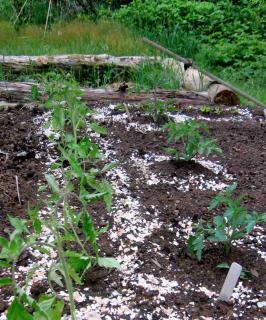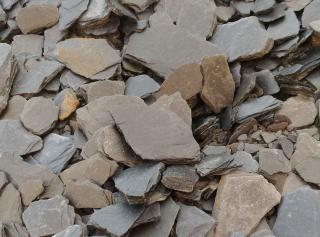

Garden stores have all sorts of mulches, designed to perfectly match the needs of plants and protect them through summer and winter. Did you know you could make mulch yourself?
Waste and scraps are treasures, those from the kitchen unquestionably so. Segregate your scraps when preparing meals and you’ll have lots to give your garden!
“All nuts and hulls can be converted into mulch” shares garden coach and landscaping expert Fernandan Voulgaropoulos.
Indeed, apart from compost, you can start keeping and storing several types of recyclable material: hazel nut or walnut hulls, coconut husks that you can shred to pieces, and even chocolate cacao hulls.
 Also remember to collect peach stones and cherry pips, they’ll excel at replacing the usual red or black clay pebbles, as well as peanut shells, eggshells and oyster shells.
Also remember to collect peach stones and cherry pips, they’ll excel at replacing the usual red or black clay pebbles, as well as peanut shells, eggshells and oyster shells.
Marie Cochard, an expert in fighting against wastage, also recommends throwing these items in your compost pile, and also to spread crushed eggshells at the foot your vegetable and fruit trees to enrich the soil mix there.
 In the garden, try to re-use bark (if not diseased) and pine tree needles, shingles that you crush to mineral shards, and plant matter like miscanthus and hemp… These all make for high-quality home-made mulches!
In the garden, try to re-use bark (if not diseased) and pine tree needles, shingles that you crush to mineral shards, and plant matter like miscanthus and hemp… These all make for high-quality home-made mulches!
If need be, also involve your neighbors and family so you can increase the quantities and make batches that are larger. Investing in a shredder might also be a great idea!
Most mulches are very versatile and can be used in many ways: shrub bed mulch, underneath trees, around annuals and biennials… They’re also visually pleasing, with the different colors and textures that let you change the atmosphere in your garden.
“Pair colors of mulch with that of your flower beds and garden”, concludes Fernanda Voulgaropoulos.
In a nutshell, DIY-mulch is great all-around!
Claire Lelong-Lehoang